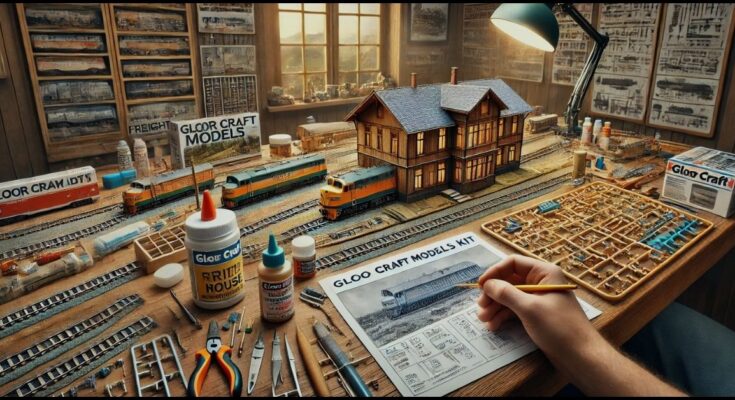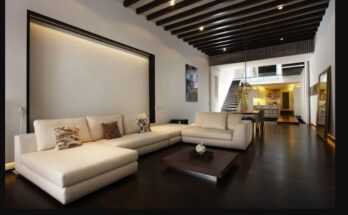Building the Gloor Craft Models Kit 410 Freight House HO Scale is a rewarding and creative experience for model train enthusiasts and hobbyists. This comprehensive guide will take you through each step of the process, from unboxing to completing your model with professional-quality details. Whether you’re a beginner or an experienced builder, these instructions ensure a satisfying and successful project.
Contents
Introduction to Gloor Craft Models Kit 410 Freight House HO Scale
The Gloor Craft Models Kit 410 Freight House HO Scale is a highly detailed kit designed to replicate a classic freight house, perfect for enhancing any HO-scale model railroad layout. Known for its precision-engineered components and high-quality materials, this kit allows hobbyists to create a realistic and historically accurate structure. In this guide, we’ll cover:
- Tools and materials needed
- Detailed step-by-step assembly instructions
- Tips for painting and weathering
- Common troubleshooting advice
- Best practices for displaying your finished model
Tools and Materials Needed
Before you begin, gather the following tools and materials to ensure a smooth building process:
- Tools:
- Hobby knife with sharp blades
- Fine-grit sandpaper or sanding sticks
- Small clamps or masking tape
- Ruler and square
- Tweezers
- Cutting mat
- Adhesives:
- Wood glue or model glue (non-toxic recommended)
- Paints and Brushes:
- Acrylic paints in appropriate colours
- Fine detail brushes and a flat brush for larger surfaces
- Optional Accessories:
- Weathering powders or washes
- Tiny LED lights for illumination
The right tools and materials will make assembly more manageable and help you achieve professional-quality results.
Unboxing and Preparing Your Workspace
When you receive your Gloor Craft Models Kit 410 Freight House, inspect the contents. Ensure that all parts are present and free of damage. Organize the components into categories for walls, roof pieces, windows, and trim. A clean, well-lit workspace with enough room to spread the pieces is essential for a smooth building process.
- Check the Contents: Verify that all parts match the list in the instruction manual.
- Prepare Your Workspace: Use a cutting mat to protect your table and ensure tools are within easy reach.
- Test Fit Components: Before glueing, dry-fit the pieces to familiarize yourself with their placement.
Step 1: Reading the Instruction Manual
The instruction manual is your roadmap. Spend time thoroughly reading it before you start. Look for:
- Diagrams that show the sequence of assembly.
- Notes on specific parts that require special attention.
- Tips for achieving the best results include when to paint or weather components.
You’ll avoid common pitfalls and build confidence by understanding the instructions upfront.
Step 2: Preparing the Components
Preparation is crucial for a polished finish. Follow these steps:
- Sanding: Smooth any rough edges on the wooden parts with fine-grit sandpaper to ensure precise fits.
- Labelling: Use small pieces of masking tape to label parts similar in size or shape.
- Painting (Optional): For pieces that will be difficult to reach after assembly, consider painting them first. This is especially helpful for interior walls and small details like window frames.
Step 3: Assembling the Base
The base serves as the foundation for your model. Here’s how to assemble it:
- Lay Out the Pieces: Identify and dry-fit the base components to ensure proper alignment.
- Glue the Base: Apply wood glue sparingly along the edges and press the pieces together. Use clamps or masking tape to hold them while the glue dries.
- Check for Level: Ensure the base sits flat on your work surface before the glue sets.
Step 4: Constructing the Walls
The walls are a key structural element of the Gloor Craft Models Kit 410 Freight House HO Scale. Follow these steps:
- Attach Walls to the Base: Align the walls with the base and glue them in place. Ensure that corners are square.
- Add Windows and Doors: Insert the pre-cut window and door components into their designated openings. Use tweezers for precision.
- Reinforce Joints: Apply a small bead of glue along the interior seams for added strength.
Step 5: Roofing and Trim
The roof and trim pieces add character to your model. Assemble them as follows:
- Cut Roofing Material: Use a hobby knife to cut the roofing material to size as per the instructions.
- Attach the Roof: Glue the roof panels onto the walls, ensuring proper alignment. Hold them in place with clamps until the glue sets.
- Add Trim: To enhance the model’s appearance, attach decorative trim pieces around the edges of the roof and walls.
Step 6: Painting and Weathering
Painting and weathering bring your model to life, adding depth and realism.
- Prime the Model: Apply a primer coat to help the paint adhere evenly.
- Paint in Layers: Use acrylic paints, starting with base colours and adding layers for details.
- Whether the Model: Use washes or powders to simulate ageing and wear. Focus on areas like the roof and corners for added authenticity.
- Seal the Paint: Apply a clear matte sealer to protect the finish.
Step 7: Adding Final Details
To make your freight house stand out, consider these finishing touches:
- Signage: Add decals or paint signage for a realistic touch.
- Accessories: Place barrels, crates, or other items around the freight house for added storytelling.
- Lighting: Install LED lights to illuminate the interior or exterior.
Troubleshooting Common Issues
Here are some tips for overcoming common challenges:
- Warped Wood: Flatten warped pieces by gently steaming them and pressing them under a heavy object.
- Gaps in Assembly: Fill minor gaps with wood filler, then sand smooth before painting.
- Loose Parts: Reapply glue and use clamps to secure loose components.
Displaying Your Finished Model
Your completed Gloor Craft Models Kit 410 Freight House HO Scale deserves a prominent place in your layout. Consider these options:
- Place it near train tracks to mimic its real-life purpose.
- Surround it with landscaping, vehicles, and figures for added realism.
- Use subtle lighting to highlight the structure’s details.
FAQs About the Gloor Craft Models Kit 410 Freight House HO Scale
Q: Is this kit suitable for beginners?
A: With careful attention to the instructions, beginners can successfully build this kit.
Q: How long does it take to build?
A: Most hobbyists complete the model in 10–15 hours, depending on experience.
Q: What type of glue should I use?
A: Wood glue or model glue works best for this kit.
Q: How do I achieve a weathered look?
A: Use washes, dry brushing, or weathering powders to simulate age and wear.
Q: Are replacement parts available?
A: Check with the manufacturer for replacement components if needed.
Conclusion
Building the Gloor Craft Models Kit 410 Freight House HO Scale is a rewarding project that enhances the authenticity of your HO-scale layout. Following this guide and taking time with each step will create a stunning and realistic model. Enjoy the process, and happy building!



